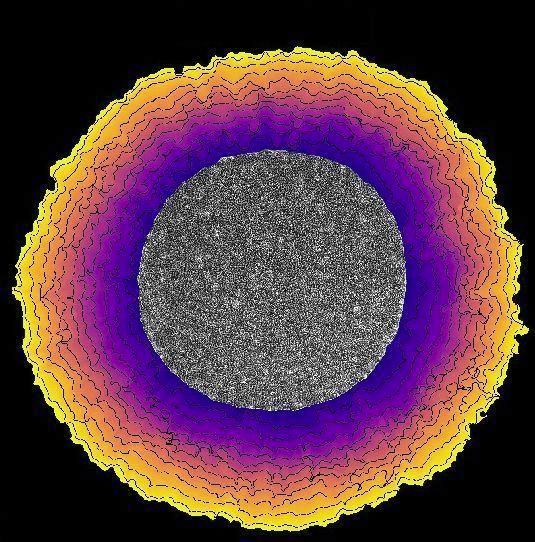
Paper & poster are available on the COMSOL conference website: www.comsol.com/paper/direct...
05.11.2025 16:13 — 👍 1 🔁 0 💬 0 📌 0@iberd.bsky.social
Computational Biology @ETH: data-driven modeling & simulation of emerging phenomena in development & disease https://bsse.ethz.ch/cobi https://youtube.com/@cobi-ethz

Paper & poster are available on the COMSOL conference website: www.comsol.com/paper/direct...
05.11.2025 16:13 — 👍 1 🔁 0 💬 0 📌 0"Within the competition to bring this field to a new level, SimuCell3D is remarkable and will mark a clear evolution of the topic."
🥁That’s what the committee said about this #SIBRemarkableOutputs 2024
👉Discover the output: tinyurl.com/53arz2rz
@iberd.bsky.social
The goal: make it easier for others to reproduce and extend these models within COMSOL.
We hope this serves as a generalizable reference for simulating collective cell behavior and pattern formation.
arxiv.org/pdf/2509.08930
This complements our earlier work introducing the DCM model 👉 bsky.app/profile/iber...
That previous paper focused on the biological questions and mathematical framework.
Here, we focus on the practical COMSOL #PIDE implementation: setup, BCs, 1D–3D, and Lagrangian reformulation for growth.

Out now: Simulating Organogenesis in #COMSOL: Tissue Patterning with Directed Cell Migration
We provide a detailed walkthrough of how to implement #DCM partial integro-differential equation models - enabling accessible simulations of tissue patterning and morphogenesis.
arxiv.org/pdf/2509.08930

Online now: Morphogen gradients can convey position and time in growing tissues #newton #physics
22.08.2025 19:39 — 👍 2 🔁 1 💬 0 📌 0
Our paper "Morphogen gradients can convey position and time in growing tissues" is now out in Newton @cp-newton.bsky.social
Quite fitting to see this novel idea that morphogen gradients not only encode position, but can also time & synchronise development over long distances out in a new journal.

📄 Read the full study here: doi.org/10.1101/2025...
🎯 Useful for: developmental biology, tissue engineering, pattern formation, and computational modeling
#DevBio #PatternFormation #CellMigration #Morphogenesis #ComputationalBiology
📌 Summary:
• #DCM is a rapid, robust mechanism for developmental pattern formation
• COMSOL FEM implementation makes DCM models numerically accessible
• #DCM patterning parameter ranges and timeframes
• Pattern Orientation via attraction anisotropy or directed tissue growth
👇Thread 🧵(10/11)

2. Dynamic #attraction #zones
Spatially varying cell attraction that changes with tissue growth can guide migrating cells, leading to precise large-scale patterning.
This mimics how tissues form rings, bands, or layered structures in vivo.
👇Thread 🧵(9/11)

We identify two mechanisms for guiding pattern orientation:
1. #Anisotropic #attraction
Cells pulling or migrating more strongly in one direction form aligned stripe-like patterns—e.g., during directional tissue growth.
👇Thread 🧵(8/11)

#DCM naturally leads to unoriented patterns—spots, labyrinths—similar to Turing-like systems.
But biological tissues often require oriented patterns to fulfill specific functions.
Can DCM produce stripes, too?
👇Thread 🧵(7/11)

Three key parameters drive the emergence and morphology of patterns:
• Initial density of motile cells
• Intercellular attraction strength
• Cell sensing radius
👇Thread 🧵(6/11)
Simulations and linear stability analysis allowed us to find #critical #conditions for pattern formation and predict #patterning #speed.
We show under which conditions #DCM can realistically pattern tissues in development.
👇Thread 🧵(5/11)

We developed a mathematical framework that represents a wide range of #DCM cues, e.g., chemotaxis, durotaxis, haptotaxis & a general Finite Element Method #FEM:
👉 1D, 2D, 3D
👉 arbitrary geometries & boundary conditions
👉 isotropic & anisotropic interactions
👉 fast, large-scale simulations
🧵(4/11)

To study #DCM, both discrete and continuum models have been used.
But:
👉 Discrete models are computationally expensive.
👉 Continuum models have required custom Finite Volume Method #FVM implementations—until now.
👇Thread 🧵(3/11)

During embryonic development, cellular tissues transition from uniform starting conditions into robust spatial patterns.
#DCM offers a particularly fast and versatile route to spontaneously symmetry breaks and pattern formation without tissue buckling.
🧵(2/11)
How can cells self-organize rapidly into complex patterns during development?
Let’s explore a powerful and underappreciated mechanism: Directed Cell Migration (DCM).
Preprint @biorxivpreprint.bsky.social : doi.org/10.1101/2025...
👇Thread 🧵(1/11)
Let me add our paper to this review of mechanical drivers of NT folding.
We showed that mammalian spinal #neuraltube folding is primarily driven by #mesoderm expansion and #zippering. #Hingepoints emerge as a result of these extrinsic forces.
www.pnas.org/doi/10.1073/...
x.com/DagmarIber/s...

Epithelial tissues are well-known to invade free space and stop proliferation at confluency.
Do we know what regulates cell proliferation spatially and temporally?
🧵by @dedenonmathieu.bsky.social

Are you a C++ expert and interested in making 3D cell-based tissue simulations with #SimuCell3D ever more powerful? Please apply and join us as #Master student, #PhD student or #Post-Doc!!
jobs.ethz.ch/job/view/JOP...
jobs.ethz.ch/job/view/JOP...
x.com/DagmarIber/s...

SimuCell3D … for simulating tissue mechanics with cell polarization. @iberd.bsky.social
Dimension: 3D
Software language: C++
Download: git.bsse.ethz.ch/iber/Publica...
bsky.app/profile/epim...

👩💻 Want to try it? Just a few extra lines of code vs. classic PINNs!
Code & details: git.bsse.ethz.ch/iber/Publica...
Retweet 🔄 if you’d use this for your inverse problems! #OpenScience

⚡ No plateaus here!
Classical PINNs stall. PINNverse keeps improving physics loss ∼ epoch^(-1.4) for Fisher’s equation.
Algebraic decay >> stagnation!

📉 #PINNverse crushes parameter error — even with:
- High noise
- Terrible initial guesses
Stable & accurate where others fail (e.g., Fisher-KPP).

💥 Why is this a breakthrough?
Standard PINNs miss non-convex Pareto fronts → overfit.
#PINNverse captures the entire Pareto front → balances physics + data perfectly.

🔑 The big idea:
Classical PINNs use weighted-sum loss → often fails.
#PINNverse reframes it as constrained optimization → unlocks better solutions.
Small change, huge impact!

📊 How does #PINNverse stack up?
✅ beats Nelder-Mead & classical PINNs
✅ handles noisy data & bad initial guesses
✅ tested on 4 tough benchmarks:
- Kinetic reaction ODE
- FitzHugh–Nagumo
- Fisher–KPP PDE
- Burgers’ PDE

🚀 Introducing #PINNverse — a game-changer for parameter estimation in differential equations! 🧠💡
No forward solves. Better accuracy. Robust to noise.
Preprint: doi.org/10.48550/arX...
#SciComm #MachineLearning #InverseProblems #PINNs